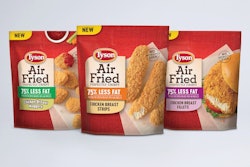
More than half of the birds raised in the U.S. were raised no antibiotics ever in 2019.
Mike Donohue, vice president of Agri Stats Inc., said the company’s data showed 53% of broiler birds were raised according to a no antibiotics ever (NAE) growing program in 2019. NAE, he said, means there were no ionophores or coccidiostats used, either.
Donohue, who spoke as part of the 2020 International Production & Processing Expo (IPPE) in Atlanta, said the figure increased rapidly in the past decade. In 2013, only 3% of the flock was raised NAE. By 2016, that figure rose to about 20%. In 2018, 50% of the flock was raised NAE. He said the figure is now plateauing.
Lower feed costs, higher vaccination costs
Removing antibiotics from production is reducing the cost of feed, Donohue said. He pointed specifically to lower feed medication costs associated with the reduction.
Conversely, vaccination is rising as integrators look for ways to protect against Salmonella, Newcastle and other diseases. The cost of vaccination per capitalized pullet in the U.S. broiler industry rose from about 60 cents per pullet to more than $1 per pullet at the beginning of 2019.
The development of new vaccines, Donohue said, can help birds fighting local variations of poultry diseases and could help knock out some disease threats all together. Moreover, breeder improvements can strengthen bird performance.
“If you are running an antibiotic-free program, you’ve got to raise your game,” Donohue said. “You’ve got to have attention to detail, you’ve really got to do the basics of poultry husbandry.”

















